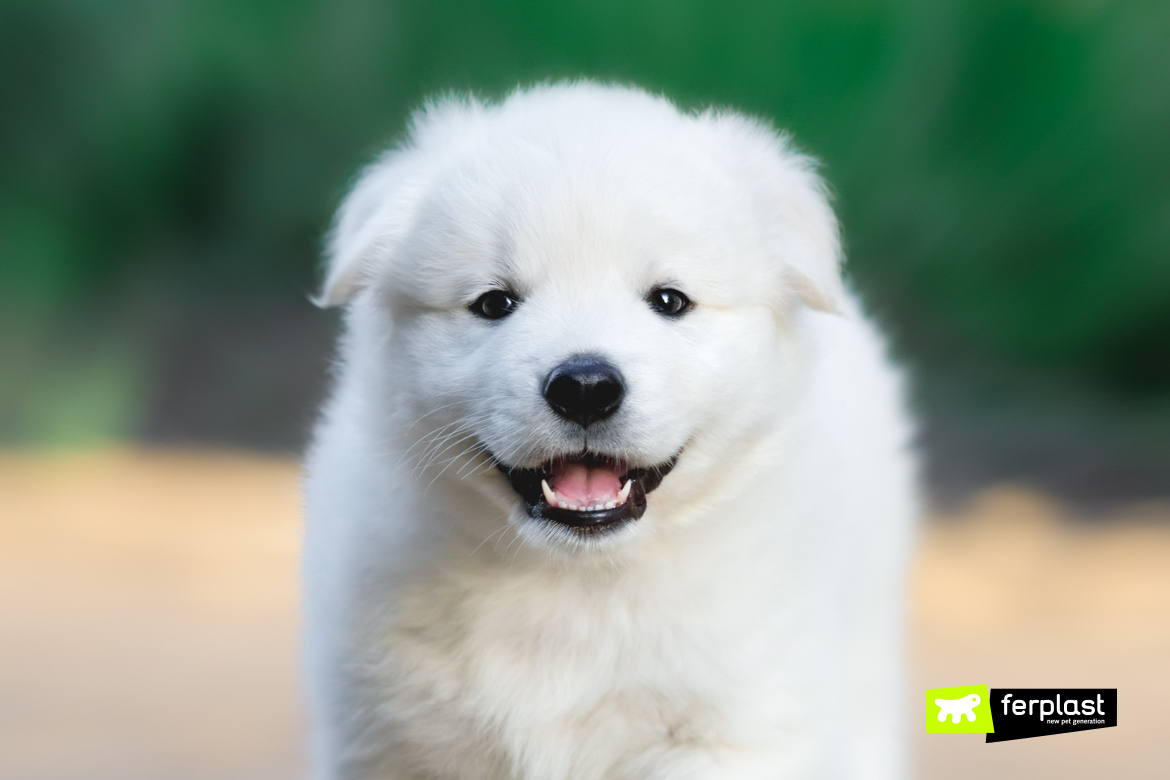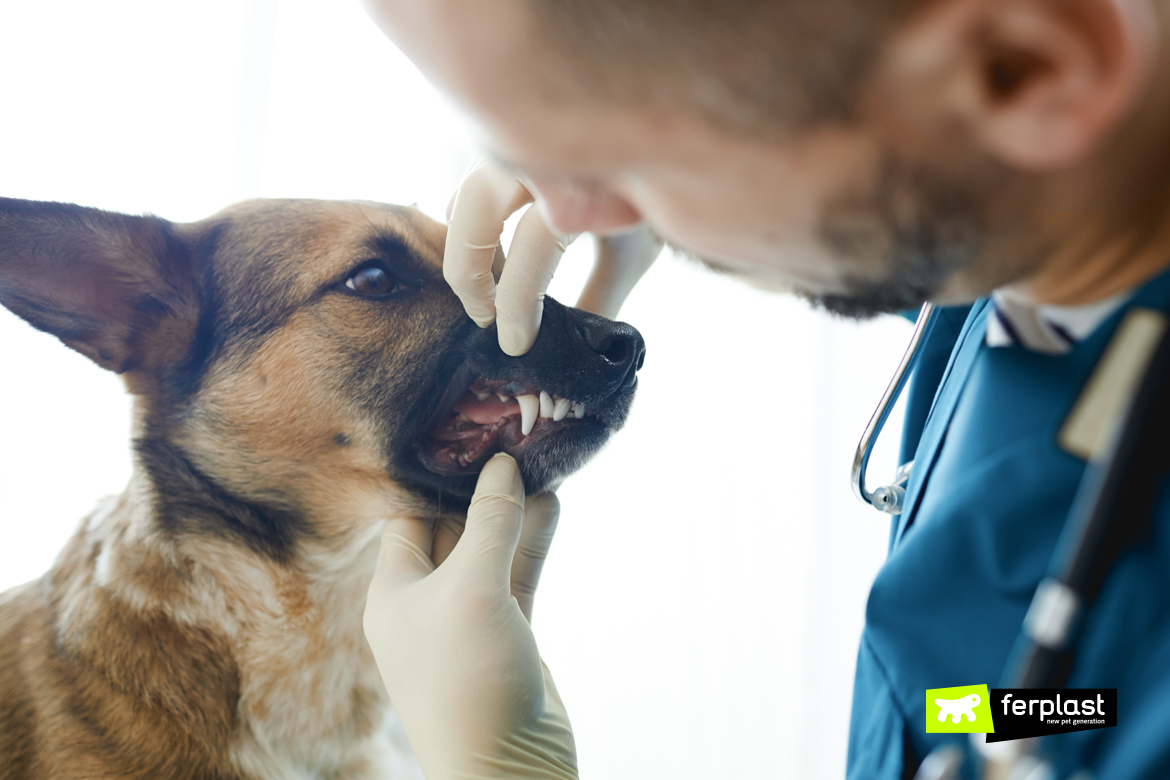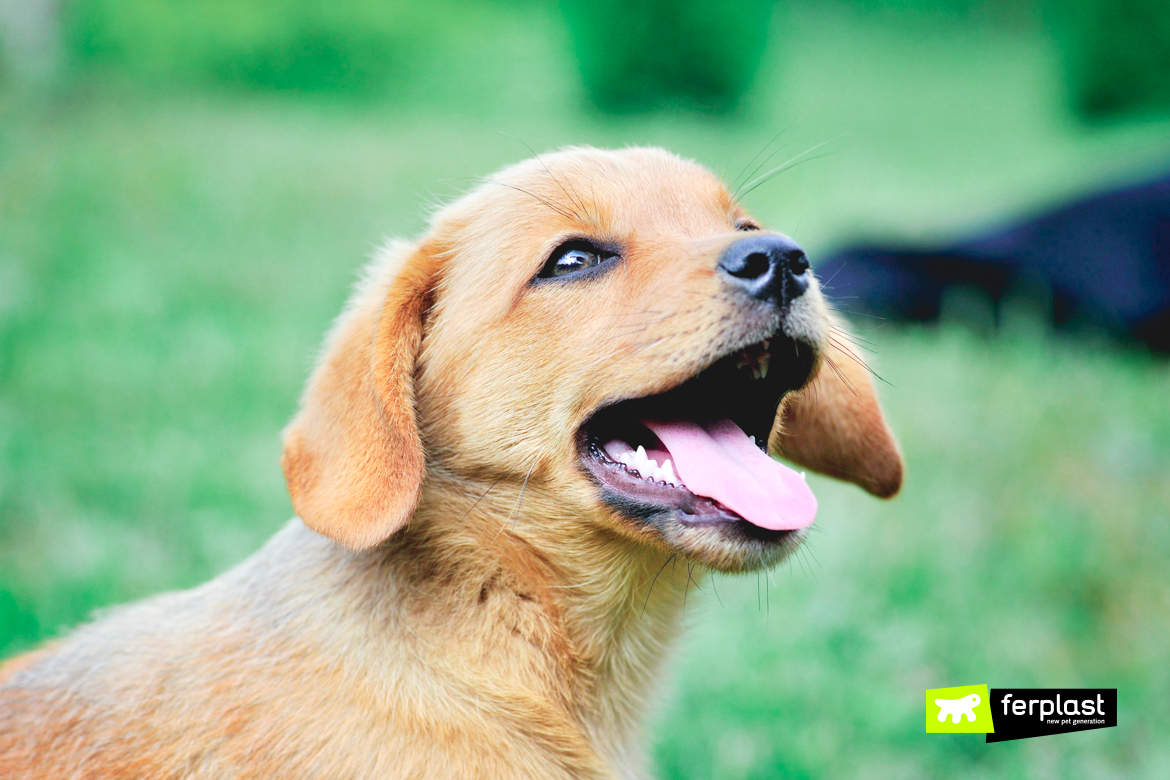Did you adopt a puppy dog a few months ago and is he filling your life with his presence and your heart with joy day after day? What a wonderful feeling – we know it well! Among the many changes that you will have to deal with during his growth, there will also be the moment when he changes his teeth. Here’s what you need to do when your dog is losing his milk teeth.
The puppy’s milk teeth
Puppies are born without teeth, but around the second or third week of life, their first milk teeth begin to appear and are later replaced by the permanent ones. At the fourth month of life, the puppy has a complete set of teeth, consisting of 28 milk teeth: six incisors, six premolars and two canines for each dental arch.
From the fourth month onwards, the milk teeth begin to fall out, making room for the 42 permanent teeth: six incisors, two canines, eight premolars and six molars in the lower jaw, while there are four molars in the upper jaw.

The change of teeth begins around the fourth month and ends between the sixth and the ninth; to be precise, we wish to point out that this period can vary depending on the breed, sex, size and season in which the animal is born. Females, for example, tend to lose their milk teeth first and the same is true for puppies born in the summer.
So, what happens during the period when the milk teeth begin to fall out up until the formation of the permanent teeth? The little dog almost always notices nothing, feeling no pain, and it is not unusual for the puppy to end up swallowing his milk teeth. Nevertheless, at times, the gums begin to bleed and, in fact, this is one of the main symptoms of this change in teeth.
What you should do if a tooth does not fall out
As we mentioned above, in 90% of cases, a puppy feels no pain, but sometimes a milk tooth can come out halfway or, even worse, it doesn’t fall out despite the pressure exerted beneath it by the permanent tooth. At times like these, what should you do to prevent your furry friend from suffering and to avoid complications?
If the tooth is there, waiting to come out, but never does, you can try to help it along, by giving the dog a special toy to bite and chew. This toy should not be too hard, but just hard enough to help your four-legged get rid of the extra tooth once and for all. Ferplast offers a wide range of chewing toys that can be very useful in situations like these; all those in the Goodbite Natural range are ideal for this purpose and they are absolutely natural and do not alter the dog’s diet.
In the most extreme cases, however, it is best to go to your vet, who will see to the problem personally and proceed to perform a real operation to extract the milk teeth that have not yet fallen out.
Always remember that a dog’s teeth are very important and, for this reason, they should always be kept clean.





